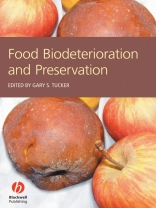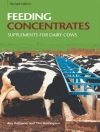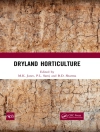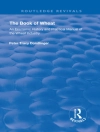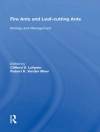Biodeterioration can be defined as the breakdown of food by agents
of microbiological origin, either directly or from products of
their metabolism. Microbiological sources can be present in foods
prior to packaging or on the surfaces of packaging materials. The
shelf life and safety of the food will depend on the type and
quantity of microorganism, as well as the hurdles to their growth
offered by various preservation techniques.
This book discusses how the agents of food biodeterioration
operate, and examines the commercially-used industrial methods
available to control them, allowing the production of safe and
wholesome foods. There is an emphasis on the equipment employed to
carry out the various methods of preservation.
The introductory chapter describes in detail the microorganisms
and mechanisms of food breakdown intrinsic to various key food
types; dairy, meat and fish, fruit, and vegetables. Direct
microorganism action will be covered in addition to enzymatic
breakdown. The second chapter addresses HACCP, including food
safety legislation. Subsequent chapters outline the principal,
commercially-used methods of preserving foods. These chapters
follow a common structure: theoretical background; flow sheets of
operations; food preparation/processing equipment; special features
of hygiene; packaging; shelf life; and product safety.
Food Biodeterioration and Preservation is directed at
food scientists and technologists in industry and academia. Since
it covers all the commonly-used methods of food preservation, it
will be relevant across the entire food manufacturing industry.
Cuprins
1. Control of biodeterioration in food.
Susan Featherstone, Nampak Research and Development, Cape Town,
South Africa.
2. Principles of HACCP: the importance of HACCP Systems in food
manufacturing Sara Mortimore, Director, Quality and Regulatory
Operations, General Mills Inc., Minneapolis, USA; and.
Sue Emond, Campden and Chorleywood Food Research Association,
Chipping Camden, Gloucestershire, UK.
3. Thermal processing.
Dr Ian J. Britt, IFTPS, Guelph, ON, Canada; and.
Dr Gary S. Tucker, Campden and Chorleywood Food Research
Association, Department of Process and Product Development,
Chipping Camden, Gloucestershire, UK.
4. Food chilling.
Dr Steve James and Christian James, Food Refrigeration and
Process Engineering Research Centre (FRPERC), Langford, North
Somerset, UK.
5. Freezing.
Dr Martin George, Campden and Chorleywood Food Research
Association, Department of Food Manufacturing Technologies,
Chipping Camden, Gloucestershire, UK.
6. Drying as a means of controlling food bio-deterioration.
Professor Xiao Dong Chen, Department of Chemical Engineering,
Monash University, Clayton, VIC, Australia.
7. Modified atmosphere packaging (MAP).
Brian P.F. Day, Key Project Manager – Food Processing
& Differentiation, Food Science Australia, Werribee, Victoria,
Australia..
8. Hurdle techniques.
Gail Betts and Linda Everis, Department of Microbiology, Campden
and Chorleywood Food Research Association, Chipping Campden,
Gloucestershire, UK.
9. Novel commercial preservation methods.
Craig Leadley, Campden and Chorleywood Food Research
Association, Department of Food Manufacturing Technologies,
Chipping Camden, Gloucestershire, UK
Despre autor
Dr Gary S. Tucker, Department of Process and Product Development, Campden & Chorleywood Food Research Association, Chipping Campden, Gloucester, UK
